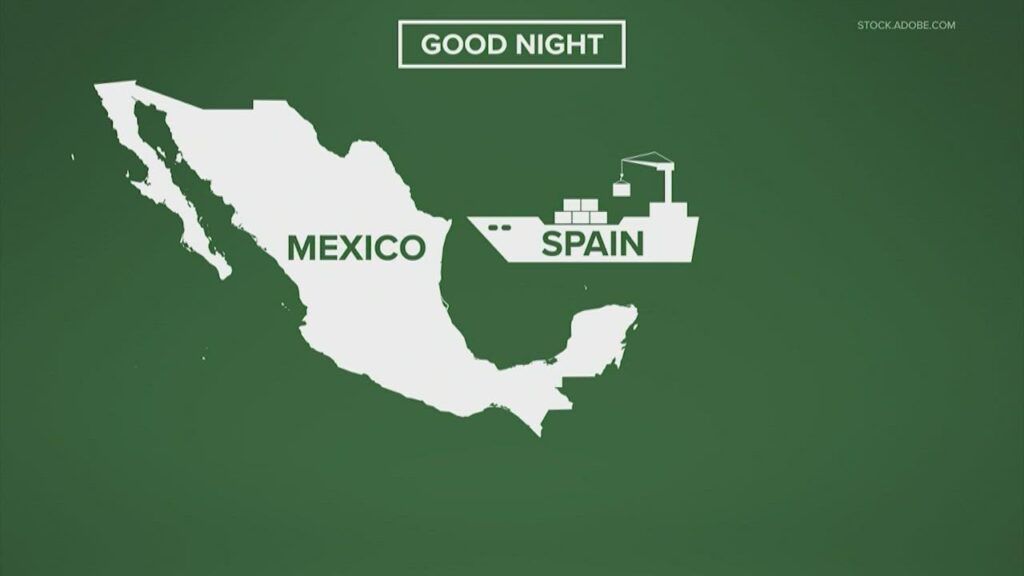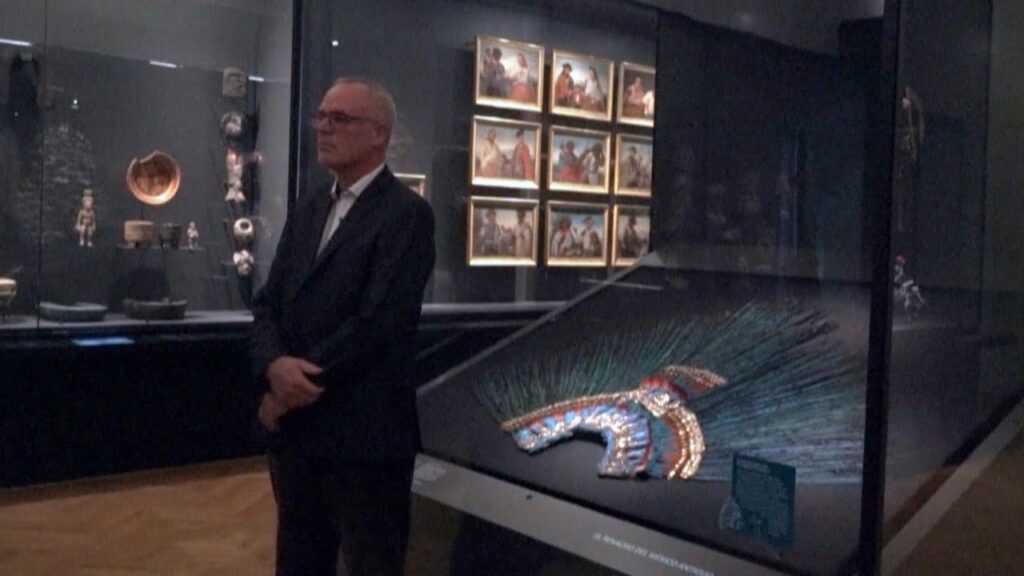The Grand Commemoration: 500 Years of Liberation from Tenochtitlán’s Rule
Marking half a millennium since the fall of the powerful Aztec capital, Tenochtitlán, the grand commemoration of 500 years of liberation reveals a complex tapestry of Mexico’s history. Festivities and solemn ceremonies across the country poignantly reflect on the seismic shifts in culture, power, and society initiated in 1521. The anniversary stirs a blend of emotions, as it commemorates the blending of indigenous and Spanish heritage while acknowledging the immense loss and resilience of the native peoples.
The historic center of Mexico City, which stands over the remnants of Tenochtitlán, becomes a focal point for this extraordinary commemoration. Here, modern-day Mexicans hold vibrant parades and exhibitions that showcase the fusion of pre-Hispanic traditions with European influences. Traditional dancers adorned in feathered headdresses move rhythmically to the beat of drums, their performances narrating the tale of resistance and survival against a backdrop of ancient ruins and colonial architecture.
Educational programs and public discussions are an integral part of the commemorative events, as they provide insights into the complexities of this historical junction. Multifaceted views are presented, exploring the nuanced perspectives on what liberation meant for the different societies involved. Expert-led tours through archaeological sites, newly curated museum exhibits, and interactive sessions in educational institutes invite locals and tourists alike to delve into a pivotal chapter of Mexico’s past, promoting a broader understanding of the events that shaped modern Mexican identity.
Exploring the Legacy of Spanish Conquests in Mexico
Mexico offers a rich tapestry of history woven through its vibrant cities, ancient ruins, and cultural practices that still resonate across the land. When the Spaniards arrived on the shores of this once untouched paradise, they brought with them a fusion of cultures that has since become integral to Mexico’s identity. The legacy of Spanish conquests can be witnessed in the convergence of indigenous traditions with the colonial architecture, language, and religion that permeate the country.
Strolling through the cobbled streets of cities like Guanajuato and Querétaro, one can see the Spanish influence imprinted on the baroque churches and grandiose plazas. These cities are treasure troves for history enthusiasts, eager to explore the colonial heritage preserved within their walls. They serve as open-air museums, where every corner narrates a part of the complex story of conquest and cultural amalgamation that defines Mexico’s past.
Beyond the cities, the impact of the Spanish conquests is also evident in Mexico’s culinary offerings. A melding of Spanish ingredients with pre-Hispanic cooking techniques gave birth to dishes that are now staples in the country. Ingredients like rice, beef, and spices were introduced by the Spaniards and are now deeply embedded in Mexican cuisine, creating a delicious fusion that is relished by both locals and tourists.
The enthralling tales of conquest and transformation are also encapsulated in Mexico’s myriad of fiestas and rituals, blending Catholic traditions brought by the Spanish with indigenous celebrations. Events like the Day of the Dead (Día de Muertos), albeit rooted in ancient indigenous culture, were influenced by Spanish religious practices, creating a unique Mexican tradition recognized worldwide for its depth of meaning and colorful expressions.
Centuries in Retrospect: Understanding the ‘Regime of Terror’
While Mexico is now a vibrant cultural tapestry and renowned for its warm hospitality, its history hasn’t always been so bright. Delving into the shadows of Mexico’s colonial era, one encounters the so-called ‘Regime of Terror,’ a period marked by the oppressive rule of Encomienda, a labor system that effectively enslaved indigenous populations for the benefit of the colonists. Under this system, rights and freedoms were virtually non-existent for the natives, and the repercussions of this time are still felt in many of the historical perceptions and stories that echo throughout the landscape today.
As one embarks on a journey through Mexico’s ancient cities and ruins, the remnants of past atrocities linger, juxtaposed against the colorful backdrop of modern day celebrations and traditions. One cannot help but ponder on the enormous fortifications and cathedrals that were erected on the backs of suppressed indigenous communities. Intricate carvings and grandiose architecture speak silently of a legacy that was bought with blood and extreme hardship.
It’s an integral chapter in Mexico’s vast chronicle—one that shaped the very fabric of its society and contributed to the complex interweaving of cultures that one witnesses now. The ‘Regime of Terror’ may be a term that sends shivers down the spine, but it is a necessary element in understanding how centuries of adversity have sculpted a nation’s spirit, embedding resilience and a deep-rooted sense of community that withstands the test of time.
Fiesta de la Libertad: Celebrating Half a Millennium of Historical Turnaround
Mexico’s vibrant history is encapsulated in the annual Fiesta de la Libertad, an event that marks a historic milestone, celebrating half a millennium since the country’s major historical turnaround. This grand festival commemorates the pivotal moments that shaped the nation’s destiny and showcases the resilient spirit of its people. Visitors are invited to share in the excitement and passion that reverberates throughout the festivities, which include colorful parades, traditional dances, and a rich tapestry of cultural exhibitions that tell the story of Mexico’s journey to independence and self-assertion.
Diving into the heart of the Fiesta, one can expect an immersive experience featuring reenactments of key historical events, with locals donning period costumes to bring Mexico’s storied past to life. The streets buzz with music from Mariachi bands, and the air fills with the aromas of authentic Mexican cuisine, offering a tantalizing taste of the country’s diverse gastronomy. Artisans from across the nation gather to display their crafts, ranging from intricate textiles to exquisite pottery, all symbolizing the pride and creativity that have long been central to the Mexican identity.
The centerpiece of the festival is the stunning fireworks display that illuminates the night sky, symbolizing the triumphs and struggles that have forged the nation’s current freedom. For the Mexican people, Fiesta de la Libertad is not just a remembrance of the past; it’s a jubilant declaration of their ongoing dedication to preserving their heritage and celebrating the liberties they continue to enjoy. Visitors are encouraged to participate in the joy and unity on display, for this festival represents not only a chapter in Mexican history but also the enduring vivacity of its culture and the unwavering hope for its future.
From Aztec Dominance to Diverse Cultures: Mexico’s Evolution
The story of Mexico is one of transformation and resilience, spanning back to a time when the Aztec Empire reigned supreme. Aztec civilization shaped much of what is now modern Mexico, with a deep understanding of agriculture, engineering, and a complex calendar system, they left an indelible mark on the country’s cultural heritage. It was an era of great cities, like the legendary Tenochtitlan, which were filled with grand temples and vibrant public spaces that buzzed with life and rituals.
With the arrival of the Spaniards in the 16th century, Mexico’s narrative took a dramatic turn. The Spanish Conquest led to a significant cultural and genetic blending, laying the foundations for a new social order. This period saw the fusion of Indigenous traditions with European influences, giving rise to a multi-faceted society. Architecture, language, and religion all bear the imprints of this tumultuous time, creating a rich tapestry of heritage that continues to evolve.
In the centuries that followed, Mexico went through a series of revolutions and reforms, each contributing to the nation’s growing diversity and complexity. The War of Independence and the Mexican Revolution were pivotal events that helped shape the Mexico we know today, setting the stage for the rise of regional cultures and identities. From the mariachis of Jalisco to the Mayan ruins of Yucatán, the country is now a mosaic of distinct practices and beliefs.
Present-day Mexico is a testament to its layered past, with the cultural landscape reflecting a blend of Indigenous roots, Spanish colonial history, and modern influences. This fusion is evident in everything from the culinary delights, such as tacos and moles, to festive holidays like Dia de Muertos and traditional crafts. As a melting pot of civilizations, Mexico continues to embrace its diversity, celebrating the many faces that constitute its national identity.
Spanish Party: Reflections on 500 Years of Cultural Blending and Identity
Mexico’s vibrant festivities are a testament to its rich mosaic of cultural history. The Spanish influence, which arrived over 500 years ago, is vividly interwoven with the indigenous cultures, creating a unique blend that is both historical and modern. From the music and dances to the food and religious ceremonies, each element represents a tapestry of cultural exchange. The Spanish brought with them their own customs, which merged with pre-Hispanic traditions, giving birth to new forms of artistic and social expression. This blend is best exemplified during celebrations like the Day of the Dead, where Spanish Catholic practices meet indigenous beliefs in afterlife and remembrance.
Among the most remarkable aspects of this cultural fusion is the culinary realm. Mexican cuisine, renowned worldwide, has been profoundly influenced by Spanish gastronomy. Ingredients such as rice, beef, and spices were introduced by Spain and seamlessly adopted into the existing food culture of maize, beans, and chili peppers. This resulted in a culinary revolution, leading to dishes that are a cornerstone of Mexican identity. Street fiestas often feature a tantalizing array of foods that tell the story of this blend, from tamales and tacos to churros and chocolate, the latter two bearing the hallmark of Spanish influence.
The flamboyant attire worn during traditional celebrations also reflects the syncretism of Spanish and indigenous heritage. The intricate embroidery on women’s dresses and the charro outfits for men are a colorful display of this cultural marriage. During dances and parades, the spirited rhythms of guitars and marimbas lead the charge, ensuing in a lively spectacle that pulls the community together. This wardrobe is not merely for aesthetic appeal but serves as a declaration of identity and pride, showcasing patterns and styles that have been passed down through generations since the era of Spanish colonization.



